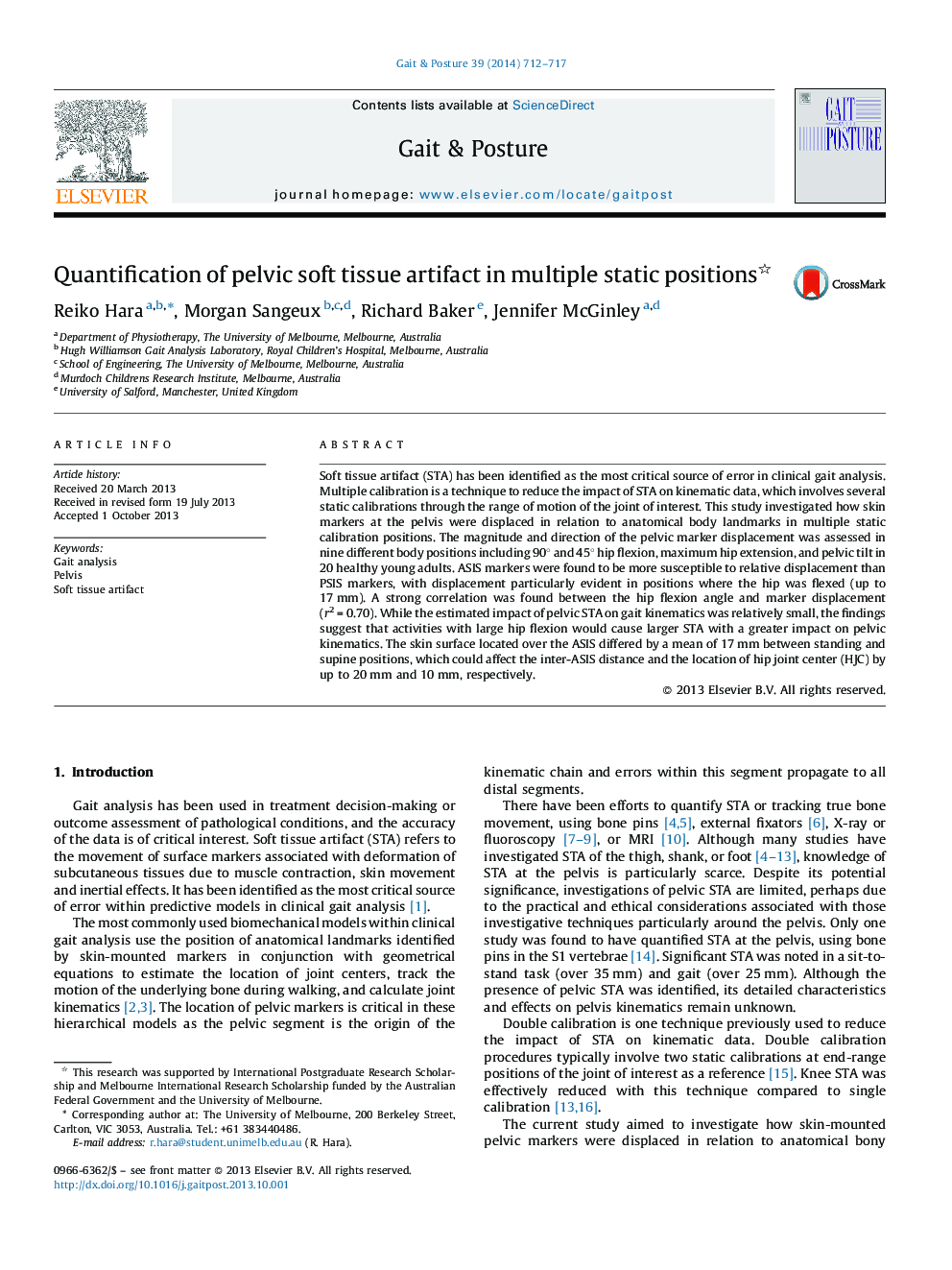| Article ID | Journal | Published Year | Pages | File Type |
|---|---|---|---|---|
| 6206377 | Gait & Posture | 2014 | 6 Pages |
â¢This study describes soft tissue artifact at pelvis in static positions.â¢ASIS markers are more susceptible to STA than PSIS markers.â¢Marker displacement at ASIS was highly associated with hip flexion angle.
Soft tissue artifact (STA) has been identified as the most critical source of error in clinical gait analysis. Multiple calibration is a technique to reduce the impact of STA on kinematic data, which involves several static calibrations through the range of motion of the joint of interest. This study investigated how skin markers at the pelvis were displaced in relation to anatomical body landmarks in multiple static calibration positions. The magnitude and direction of the pelvic marker displacement was assessed in nine different body positions including 90° and 45° hip flexion, maximum hip extension, and pelvic tilt in 20 healthy young adults. ASIS markers were found to be more susceptible to relative displacement than PSIS markers, with displacement particularly evident in positions where the hip was flexed (up to 17 mm). A strong correlation was found between the hip flexion angle and marker displacement (r2 = 0.70). While the estimated impact of pelvic STA on gait kinematics was relatively small, the findings suggest that activities with large hip flexion would cause larger STA with a greater impact on pelvic kinematics. The skin surface located over the ASIS differed by a mean of 17 mm between standing and supine positions, which could affect the inter-ASIS distance and the location of hip joint center (HJC) by up to 20 mm and 10 mm, respectively.
